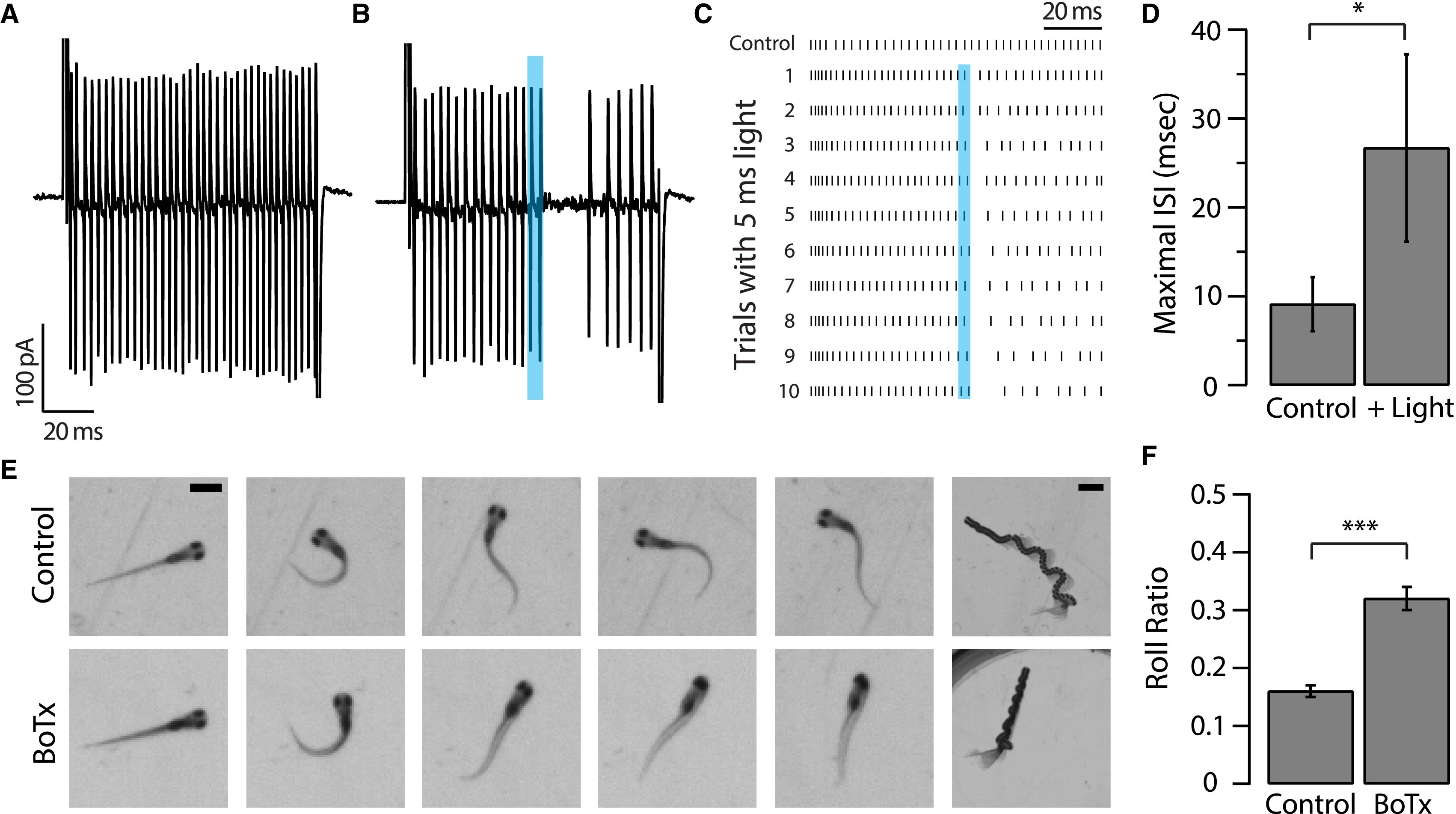Fig. 7
Silencing CSF-cNs Induces a Defect in Balance during Fast Swimming
(A) A voltage step (+180 mV for 100 ms from a holding potential of −65 mV) in cell-attached mode leads to high-frequency CaP motor neuron spiking in the control condition.
(B) Typical trial showing that in a Tg(pkd2l1:gal4; UAS:ChR2-mCherry) transgenic larva a 5-ms light pulse applied during the voltage step leads to the prompt silencing of the CaP motor neuron for approximately 20 ms.
(C) Raster plot of CaP spiking without (top trace) and with (bottom ten traces) optogenetic stimulation of CSF-cNs. Repetition of ten sequential trials confirmed the robust effect of silencing CaP firing. The duration of silencing tended to increase during sequential trials.
(D) Maximum interspike interval (ISI) was quantified for five spikes prior to the light pulse and five spikes following the light pulse. All cells showed silencing following the 5-ms light pulse, illustrated by an increase in ISI (9.10 ms ± 3.04 ms before and 26.69 ms ± 10.55 ms after the light pulse; n = 4, paired t test: ∗p = 0.02).
(E) Sample sequence of images acquired with a high-speed camera during acoustically evoked escaped responses for Tg(pkd2l1:gal4; UAS:BoTxBLC-GFP) transgenic larvae and control siblings. Magnified images (five panels on the left) demonstrate the rolling phenotype when CSF-cNs are genetically targeted with BotxBLC-GFP+ to silence GABA release (scale bars, 1 mm). Z stack of the entire escape response sequence for BotxBLC-GFP+ and control siblings (panels on the right; scale bars, 2 mm).
(F) Calculated roll ratio for Tg(pkd2l1:gal4; UAS:BoTxBLC-GFP) transgenic larvae and control siblings (n = 148 fish for each genotype). BotxBLC-GFP+ fish were significantly more likely to tip over and roll during the escape response than the control siblings (∗∗∗p < 0.001).
See also Figure S1, Table S1, and Movies S1, S2, and S3.

